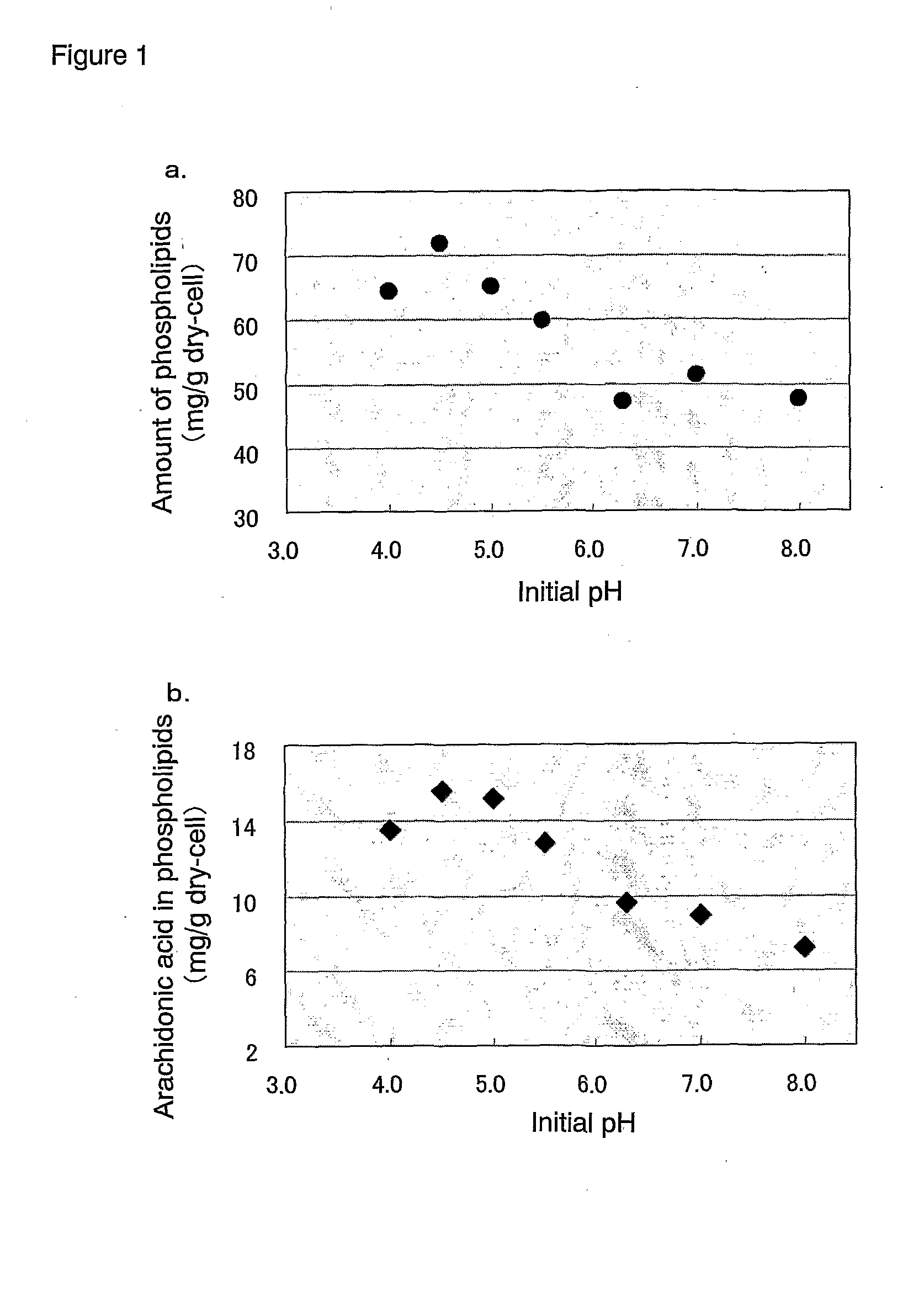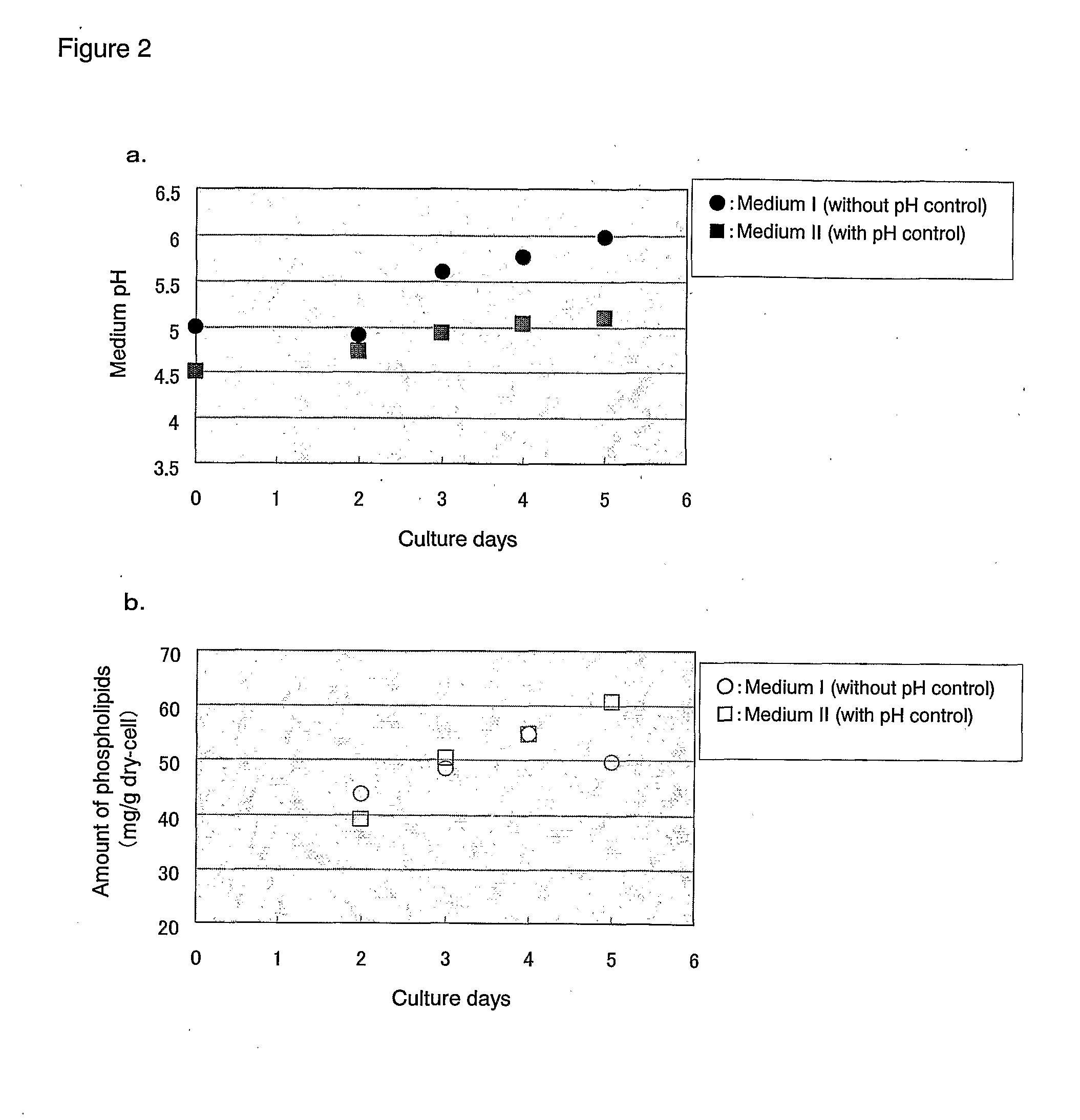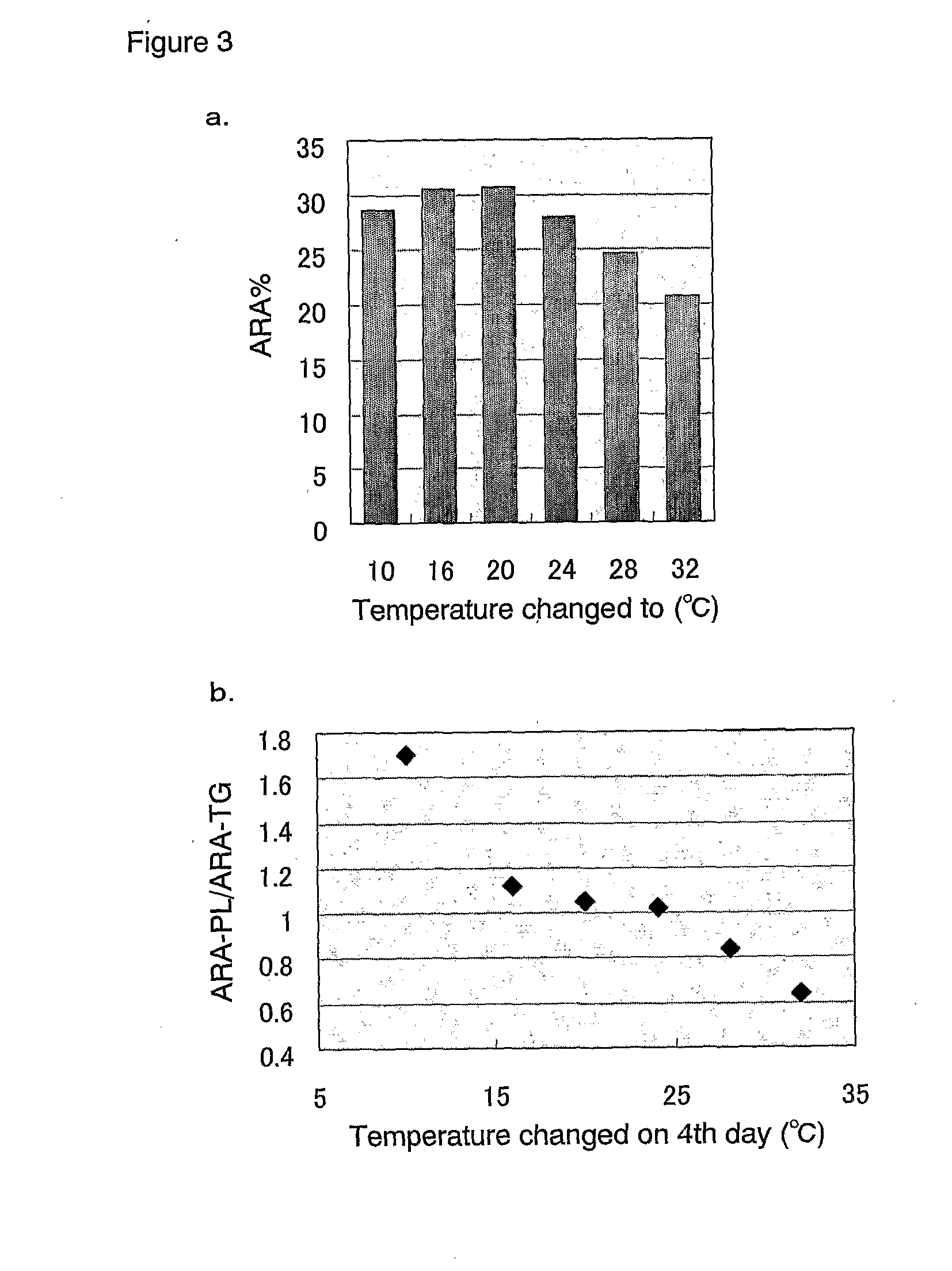Microbial fermentation-based production of phospholipids containing long-chain polyunsaturated fatty acids as their constituents
a technology of long-chain polyunsaturated fatty acids and fermentation-based production, which is applied in the direction of fermentation, etc., can solve the problems of lcpufa-pl that cannot be used in bovine brains, cannot guarantee reliable quality, and cannot achieve stable supply and supply, so as to achieve stable supply and improve the effect of quality and stability, and improve the use of bovine brains
- Summary
- Abstract
- Description
- Claims
- Application Information
AI Technical Summary
Benefits of technology
Problems solved by technology
Method used
Image
Examples
example 1
Productivity of Branched Fatty Acid (Isopalmitic Acid (iso16:0))
[0083]A medium (pH 6.3, 20 mL) containing 1% yeast extract and 4% glucose was prepared in 100 mL Meyer's flasks and sterilized at 120° C. for 20 minutes. Two strains belonging to Conidiobolus sp., i.e., Conidiobolus thromoboides CBS183.60 and Conidiobolus nanodes CBS154.56, as well as Strains A to E belonging to Mortierella sp. shown in Table 1 were respectively inoculated in an amount of one platinum loop into the medium, followed by culturing for 7 days under conditions of 120 rpm reciprocal shaking at a temperature of 28° C. After the completion of culturing, the cells were collected by filtration, sufficiently washed with water and then lyophilized overnight to obtain dried cells for each case.
[0084]A mixed solvent of chloroform / methanol=2:1 (4 mL) was added to the resulting dried cells and each mixture was gently agitated at 70° C. for 1 hour to collect the organic solvent layer, followed by re-addition of the abov...
example 2
Composition of LCPUFA-Containing Phospholipids in Mortierella sp
[0087]A medium (pH 6.3, 4 mL) containing 1% yeast extract and 4% glucose was prepared in 20 mL Meyer's flasks and sterilized at 120° C. for 20 minutes. Strains A, B, D and E shown in Table 1 were respectively inoculated in an amount of one platinum loop into the medium, followed by culturing for 7 days under conditions of 120 rpm reciprocal shaking at a temperature of 28° C. to obtain dried cells A′, D′ and E′. Likewise, a medium (pH 5.0, 4 ml) containing 1% soy flour, 1.5% glucose and 0.3% KH2PO4 was prepared in a 20 ml Meyer's flask and then inoculated with Strain C shown in Table 1, followed by culturing in the same manner as shown above to obtain dried cell C′.
[0088]Each total lipid fraction obtained in the same manner as shown in Example 1 was subjected to TLC (the developing solvent used was chloroform:methanol:acetic acid:water=50:37.5:3.5:2 (v / v / v / v)) and fractionated into the respective phospholipid fractions, ...
example 3
Culturing in the Presence of Phosphate Salt
[0090]Media (pH 6.3, 4 mL) containing 1% soy flour, 3% glucose and KH2PO4 at 6 different concentrations shown in Table 4 were prepared in 20 mL Meyer's flasks and sterilized at 120° C. for 20 minutes. A spore suspension of Mortierella schmuckeri NRRL2761 or Mortierella alpina CBS224.37 was inoculated into the above media, followed by culturing for 5 days under conditions of 120 rpm reciprocal shaking at a temperature of 28° C. After the completion of culturing, all lipids were extracted from the lyophilized cells in the same manner as shown in Example 1 and fractionated by Sep-Pak Plus column chromatography into triglyceride (TG) and phospholipid (Pb) fractions. The elution solvent used was chloroform for triglyceride elution and methanol for phospholipid elution, and these organic solvents were distilled off with a centrifugal evaporator to obtain each fraction. After fractionation, each fraction was derived into a methyl ester form by the...
PUM
 Login to View More
Login to View More Abstract
Description
Claims
Application Information
 Login to View More
Login to View More - R&D
- Intellectual Property
- Life Sciences
- Materials
- Tech Scout
- Unparalleled Data Quality
- Higher Quality Content
- 60% Fewer Hallucinations
Browse by: Latest US Patents, China's latest patents, Technical Efficacy Thesaurus, Application Domain, Technology Topic, Popular Technical Reports.
© 2025 PatSnap. All rights reserved.Legal|Privacy policy|Modern Slavery Act Transparency Statement|Sitemap|About US| Contact US: help@patsnap.com



